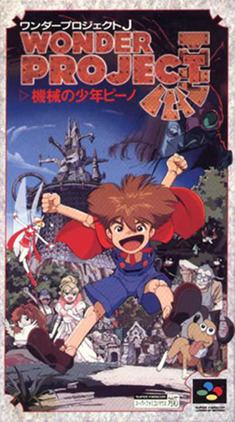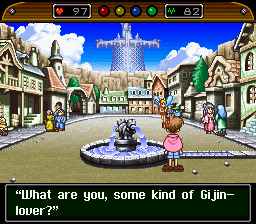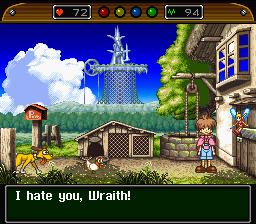10 /10 1 Votes
Director(s) Takashi Yoneda Composer(s) Akihiko Mori Mode(s) Single-player Publisher Enix Developers Enix, Givro | 5/5 Emuparadise Designer(s) Takashi Yoneda Series Wonder Project Initial release date 9 December 1994 Genre Life simulation game | |||||||||||||||||||||||||||||||||
 | ||||||||||||||||||||||||||||||||||
Artist Toshihiro Kawamoto (character design) Platform Super Nintendo Entertainment System Similar Enix games, Role-playing video games | ||||||||||||||||||||||||||||||||||
Snes wonder project j machine boy pino jp kikai no sh nen p no
Wonder Project J: Kikai no Shōnen Pīno (ワンダープロジェクトJ機械の少年ピーノ Wonder Project J: Machine Boy Pino) is a Japan-exclusive video game published by Enix for the Super Famicom in 1994. The game was developed by Almanic, which also developed the Enix-published E.V.O.: Search for Eden.
Contents
- Snes wonder project j machine boy pino jp kikai no sh nen p no
- test wonder project j kikai no sh nen p no snes
- Reception
- References

The game is a raising simulation in which the player raises a Pinocchio-esque boy, whose default name is "Pino", to succeed in various challenges and confrontations to activate virtue circuits, with his final task to foster relations between humans and the robot-like Gijin. Its sequel, Wonder Project J2: Corlo no Mori no Josette, was released on the Nintendo 64 two years later.

test wonder project j kikai no sh nen p no snes
Reception
In April 1995, Famitsu magazine's Reader Cross Review gave the game a 7 out of 10.



References
Wonder Project J Wikipedia(Text) CC BY-SA
